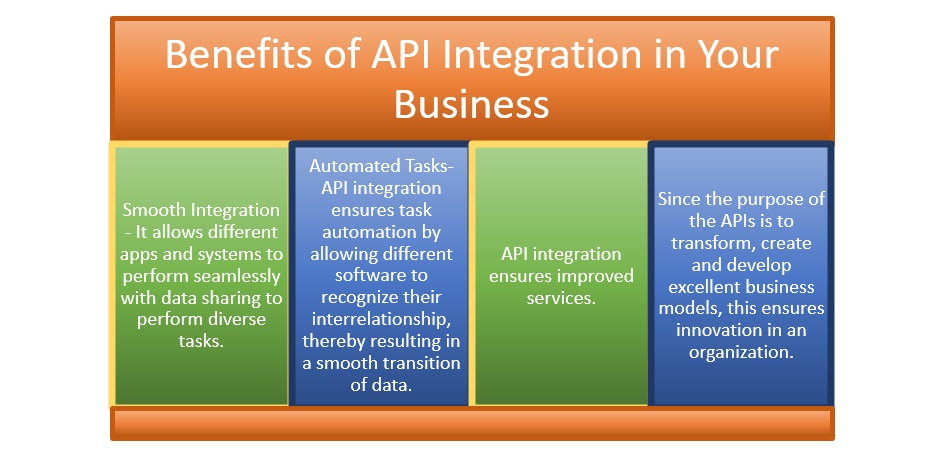How Can APIs Benefit Your Business?

APIs and their importance are not new to the tech world. Each day marks the launch of some new software tool in the technologically obsessed industry around the world. APIs and API integration play an integral role in an organization’s success.
What are APIs?
API or Application Programming Interface is a software that acts like an intermediary that allows two different applications to converse with each other. In simpler words, it is a messenger that sends the service request to the service provider app and delivers the response back to the requesting app. The excellence of an API software is governed on the basis of the ease it provides in program development with building blocks. The different types of APIs are:

What is API Integration?
APIs enable the existing applications and data to be influenced by other apps. In a way, internal networking becomes possible with APIs. API integration is a process by which the tasks in a company are automated by integrating the databases and programs with prevalent industry operations. It ensures smooth communication between various apps, thereby adding to the product innovation.
To assist in a performance-oriented and well-connected workflow, API data integration is imperative. To understand the API integration process, let us take a look at the presentation below:

All About the Process of API Integration
- Research – It should be noted that all APIs are not similar. The research should comprise of knowing and understanding the kind of API being dealt with; the amount of data payload; whether the documentation comes with Web Services Definition Language for SOAP apps or Web Application Description Language for REST apps.
- Data Flow Plan – Post research, once you know that the data integration is possible, the planning of data flow from one app to another forms the most critical part. The aspects worth considering in this step are, ensuring that you are in sync with the required security measures of the API; the amount of data to be transferred and at what intervals it needs to be transferred, it means that the volume of data should be in balance with the rate of data transfer and time required; data discrepancies should be avoided by assuring that the data format is acceptable by the receiving end.
- Map Layout of Data – Once you are through the above steps, it is important to take a visual glance at the map. This map would comprise of data app on one side with transferrable data and information. While the other side would contain the data as it would appear post the data transfer.
- The above procedures are followed by the development process.
- This marks the final and testing phase which consists of the use-case testing and the development testing.
How Do APIs Benefit Businesses?
APIs can benefit your business in more than one way.

Advantages of Using APIs for Data Integration

Organizations have been adopting the API integration to achieve a smooth data transition in lesser time and workforce. An API-led integration would work best for your organization because:
- It enables inter-system integration such as CRM integration with the marketing automation system.
- It improves the overall functionality of the internal as well as external systems.
- It has served to simplify and enhance the customers’ experience by improving consumer-service provider interaction.
- The developers can code better with API software as they can deliver functionality as microservices.
- The operating costs have significantly reduced since a number of manual tasks are being performed by API tools.
- APIs allow the developers to develop reusable components as a result of which the overall software development cost has reduced.
- With features like Single Sign-On, the security of the organizations has improved.
- Mobile users can now get information easily with APIs since most of the apps are governed by APIs.
- With API integration, businesses have seen a significant reduction in outages.
With API data integration, organizations have written their success stories. In a way, with API, you are letting the apps, systems, and devices to be able to converse seamlessly with each other. With agile delivery, increased productivity, and huge operational visibility, APIs have transformed the current businesses positively.